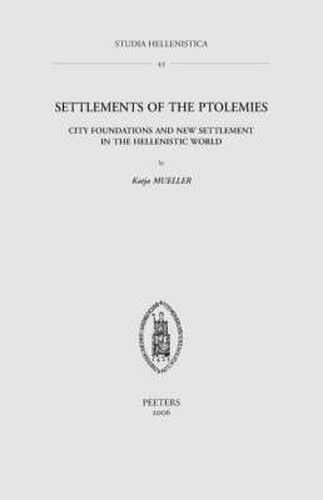Readings Newsletter
Become a Readings Member to make your shopping experience even easier.
Sign in or sign up for free!
You’re not far away from qualifying for FREE standard shipping within Australia
You’ve qualified for FREE standard shipping within Australia
The cart is loading…






New settlement, relocation and migration have been part of human life right from the beginning. It is an essential ingredient of socio-economic life in antiquity and in the modern world. This book tells the history of new cities and settlement under the Ptolemies (332 to 30 BC). The Ptolemies ruled Egypt, numerous Aegean Islands, large stretches of the Mediterranean and Red Sea coasts for three centuries. They up-rooted, transferred, replanted and attracted people to new and old settlements throughout their realm. Departing from the traditional emphasis on Egypt only, or outside Egypt only, and bridging the scholarly divides between Egyptologists, Classicists, Archaeologists and Geographers, this study offers an innovative framework for understanding the structure of and processes underlying new Ptolemaic settlement. By assessing topics such as bilingual toponyms, spatial settlement networks and the rural impact of new foundations, population size, urban differentiation, politics and programmes that facilitated new settllement, the author draws the first comprehensive and multivariant picture of the basis for Ptolemaic power: land, people and cities.
$9.00 standard shipping within Australia
FREE standard shipping within Australia for orders over $100.00
Express & International shipping calculated at checkout
New settlement, relocation and migration have been part of human life right from the beginning. It is an essential ingredient of socio-economic life in antiquity and in the modern world. This book tells the history of new cities and settlement under the Ptolemies (332 to 30 BC). The Ptolemies ruled Egypt, numerous Aegean Islands, large stretches of the Mediterranean and Red Sea coasts for three centuries. They up-rooted, transferred, replanted and attracted people to new and old settlements throughout their realm. Departing from the traditional emphasis on Egypt only, or outside Egypt only, and bridging the scholarly divides between Egyptologists, Classicists, Archaeologists and Geographers, this study offers an innovative framework for understanding the structure of and processes underlying new Ptolemaic settlement. By assessing topics such as bilingual toponyms, spatial settlement networks and the rural impact of new foundations, population size, urban differentiation, politics and programmes that facilitated new settllement, the author draws the first comprehensive and multivariant picture of the basis for Ptolemaic power: land, people and cities.